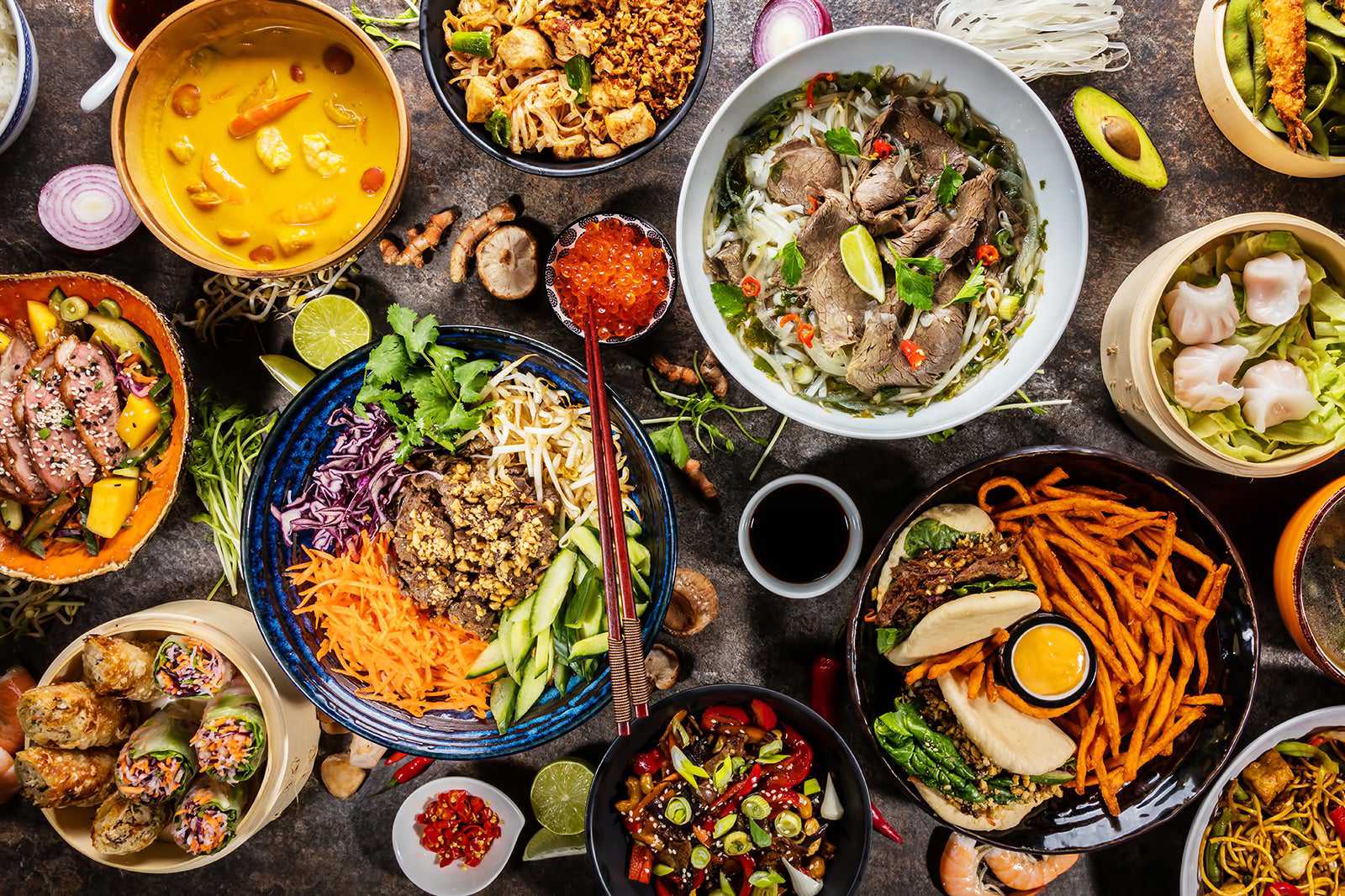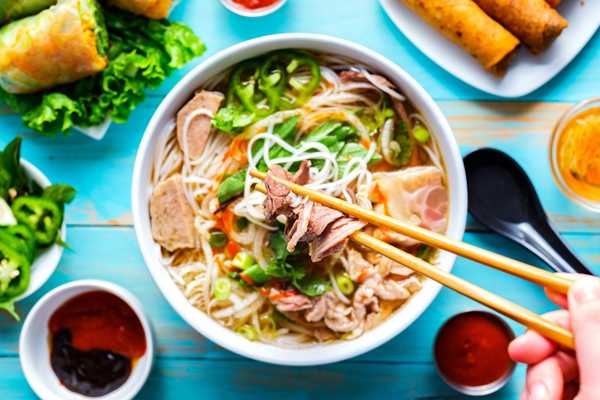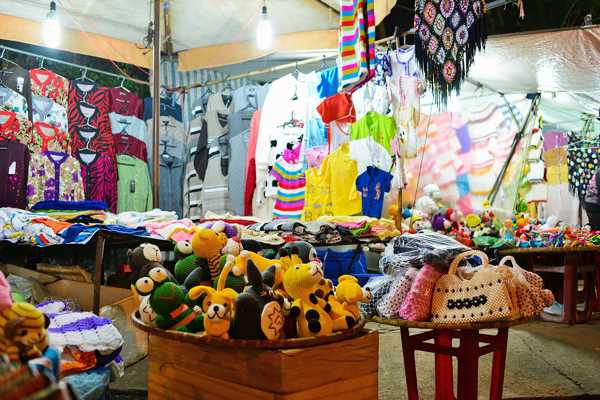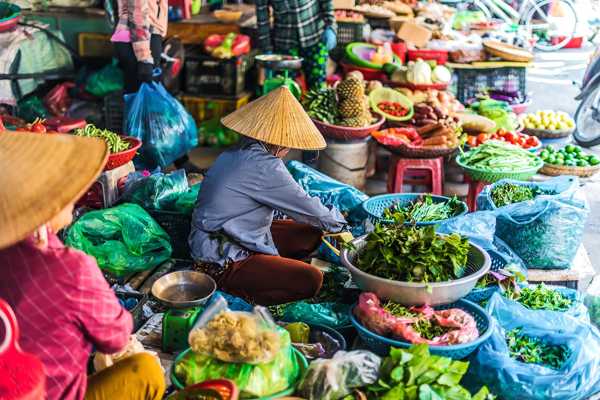Vietnamese food is known to be both healthy and robust in flavor, thanks to its generous combination of fresh herbs and greens, paired with rice, noodles, seafood, pork and beef. While many cities such as Hanoi and Ho Chi Minh City offer plenty of fine-dining venues and five-star hotel restaurants decked out in extravagant settings, some of the best (and most authentic) Vietnamese delicacies are actually found at roadside eateries, vibrant street markets, and humble-looking restaurants.
A typical meal includes rice or noodles, a meat or seafood dish, a vegetable dish, soup and nuoc cham (fermented fish sauce) for dipping, each of which you can easily customize to your taste. Here’s a helpful guide on what to eat in Vietnam, most of which can be enjoyed just about any time of the day. While most are familiar with pho or spring rolls, there’s a wide range of Vietnamese dishes only available in certain regions so be sure to try them out during your visit.
- 1
Pho
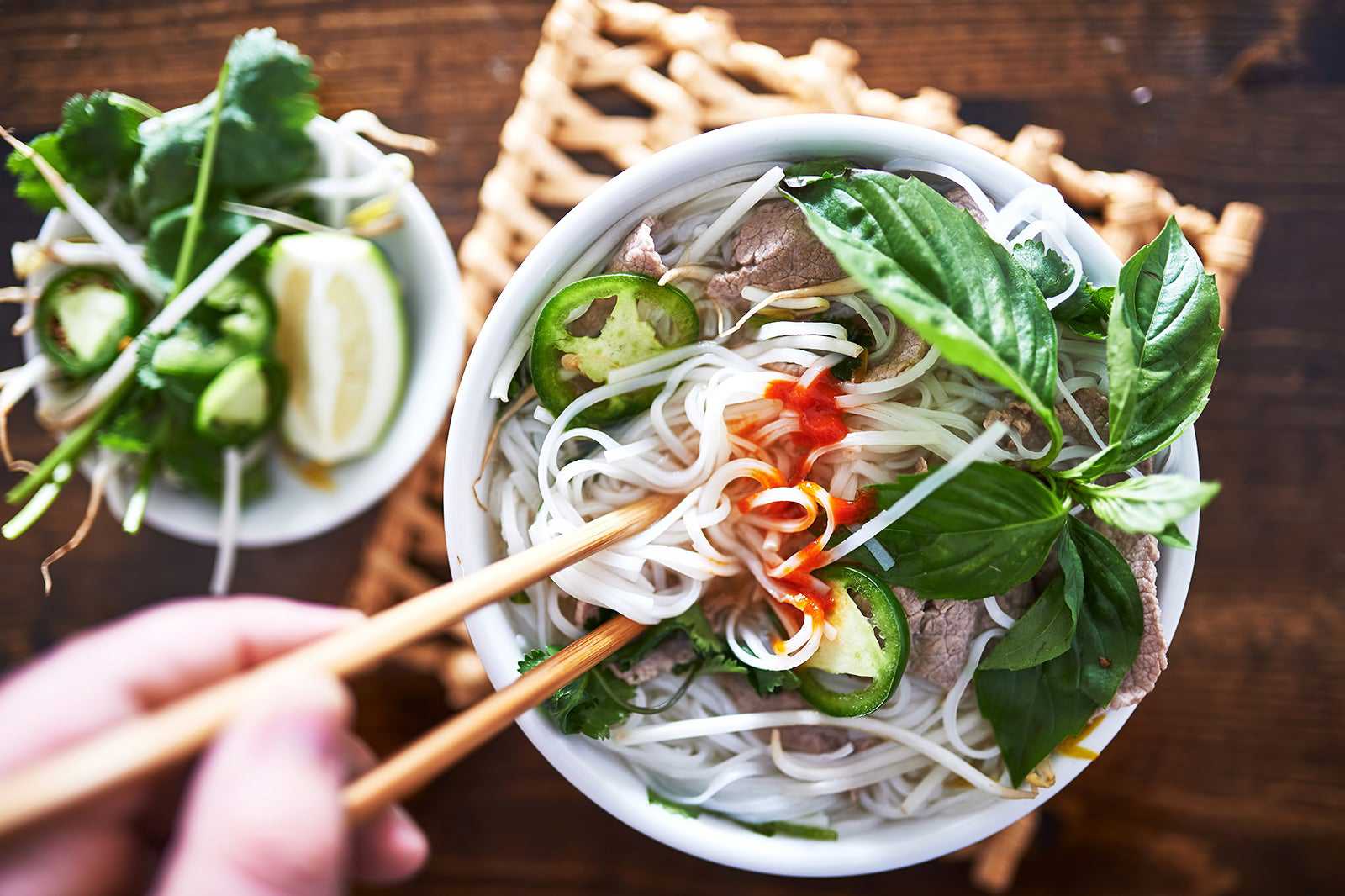
- Food
Pho is essentially Vietnam’s signature dish, comprising rice noodles in a flavorful soup with meat and various greens, plus a side of nuoc cham (fermented fish) or chili sauce. A basic bowl contains tai (beef slices), bo vien (beef meatballs) or nam (beef flank), topped with bean sprouts, lime wedges, and fresh herbs such as basil, mint, cilantro, and onions.
Depending on the restaurant or roadside stall, you can also opt for more exotic ingredients such as gan (beef tendon), sach (thinly-sliced pig stomach), and ve don (flank with cartilage).
- 2
Banh mi
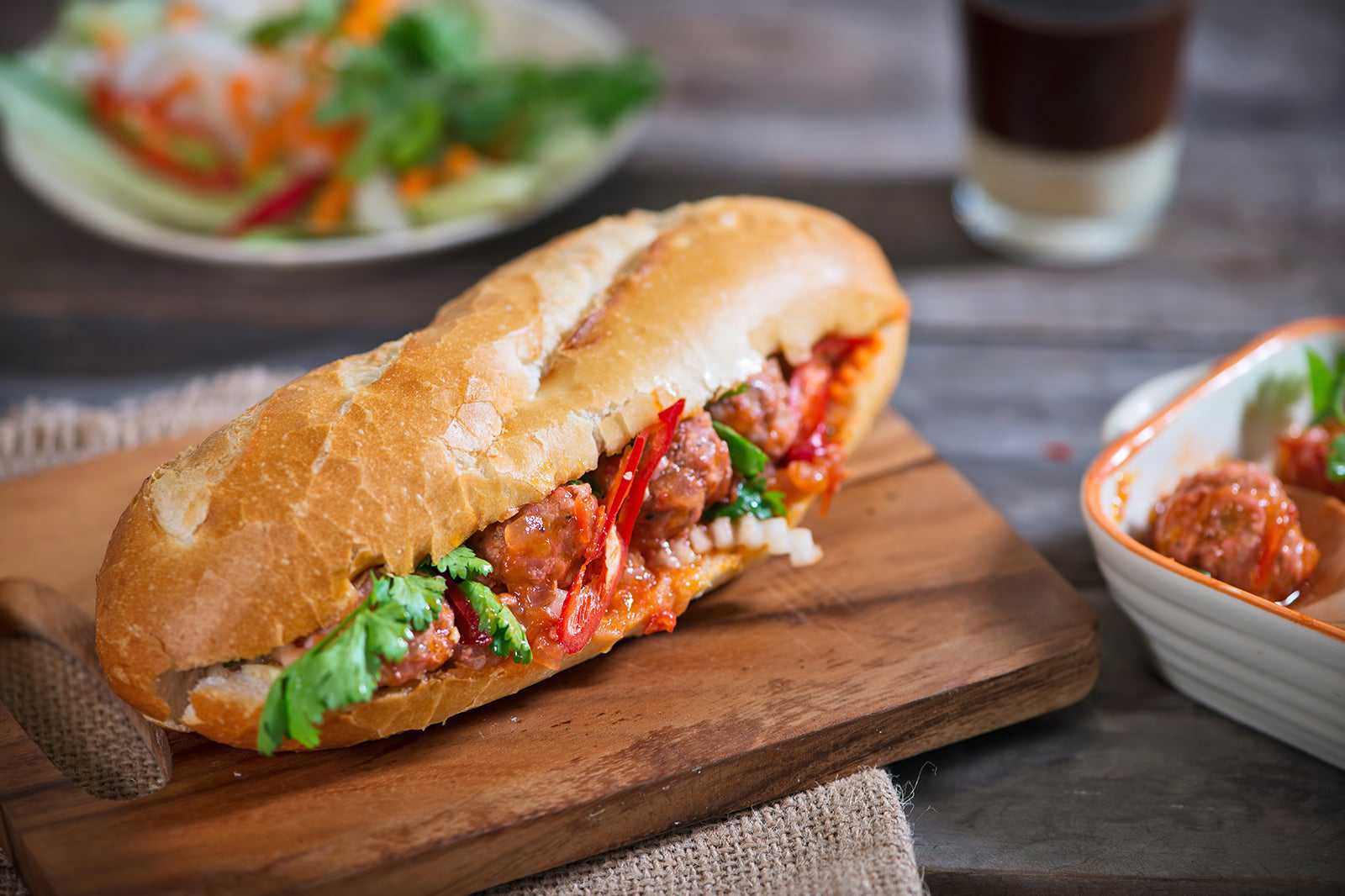
- Food
Banh mi is a unique French-Vietnamese sandwich that’s great for when you need a quick meal. It consists of a toasted baguette sandwich, pickled vegetables, pate, butter, soy sauce, cilantro, chilies, and hot peppers.
Most banh mi sellers offer a wide range of meat fillings, including heo quay (roasted pork belly), trung op la (fried egg), thit nuong (broiled pork loin), cha ca (fried fish with turmeric and dill), cha lua (boiled sausages), xa xiu (Chinese barbecued pork), and thit ga (poached chicken).
- 3
Banh xeo (crispy pancake)
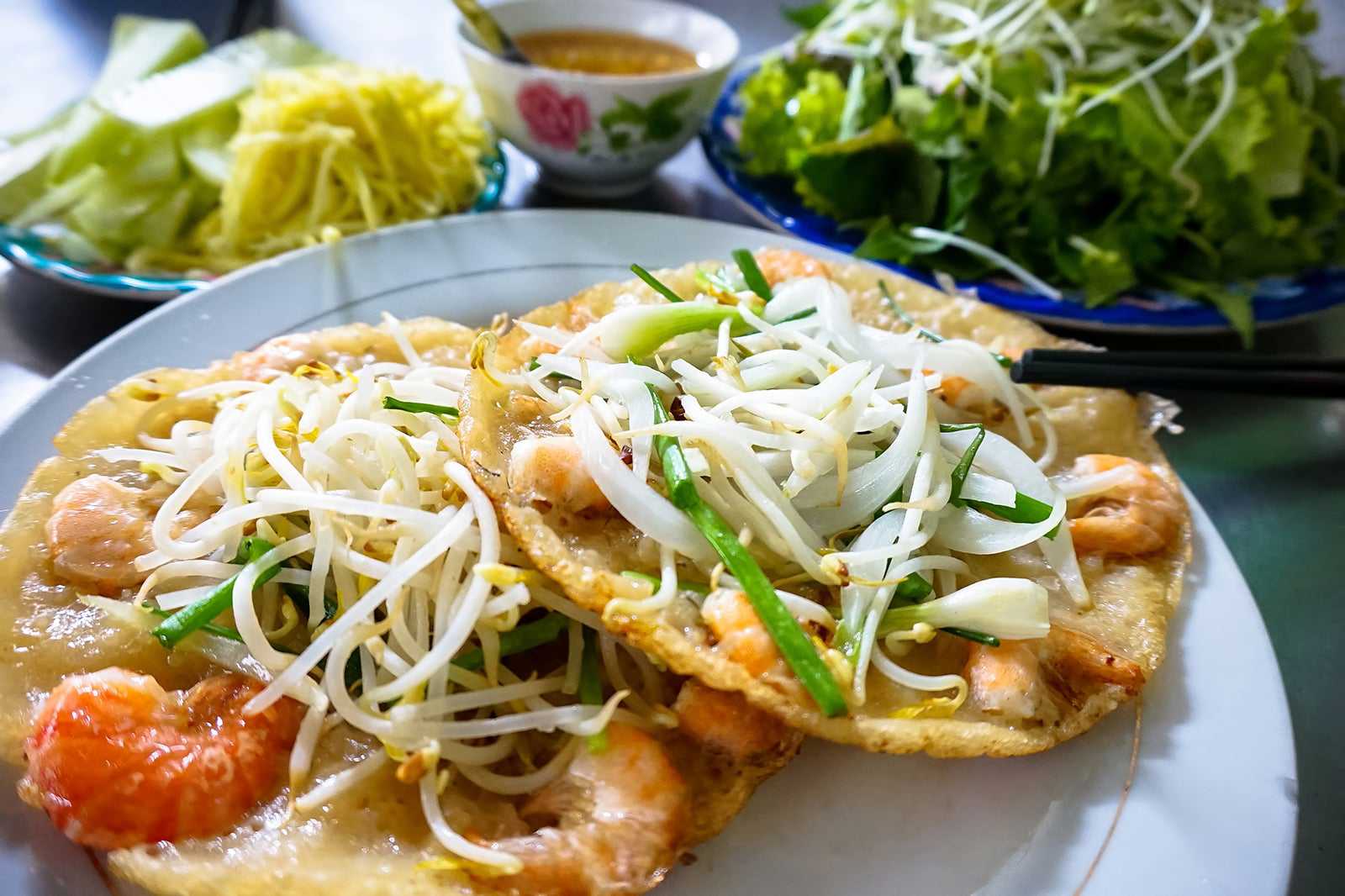
- Food
Similar to a crepe or pancake, banh xeo is made of rice flour, coconut milk, and turmeric, which you can fill with vermicelli noodles, chicken, pork or beef slices, shrimp, sliced onions, beansprouts, and mushrooms. Most roadside stalls, local markets, and restaurants sell a platter of banh xeo with a side of fresh lettuce or rice papers.
Eat like a local by wrapping your banh xeo in mustard leaf, lettuce leaves or rice papers together with nem lui (lemongrass pork skewers), mint leaves, and basil, before dipping it in fermented peanut sauce.
- 4
Goi cuon (Vietnamese fresh spring rolls)
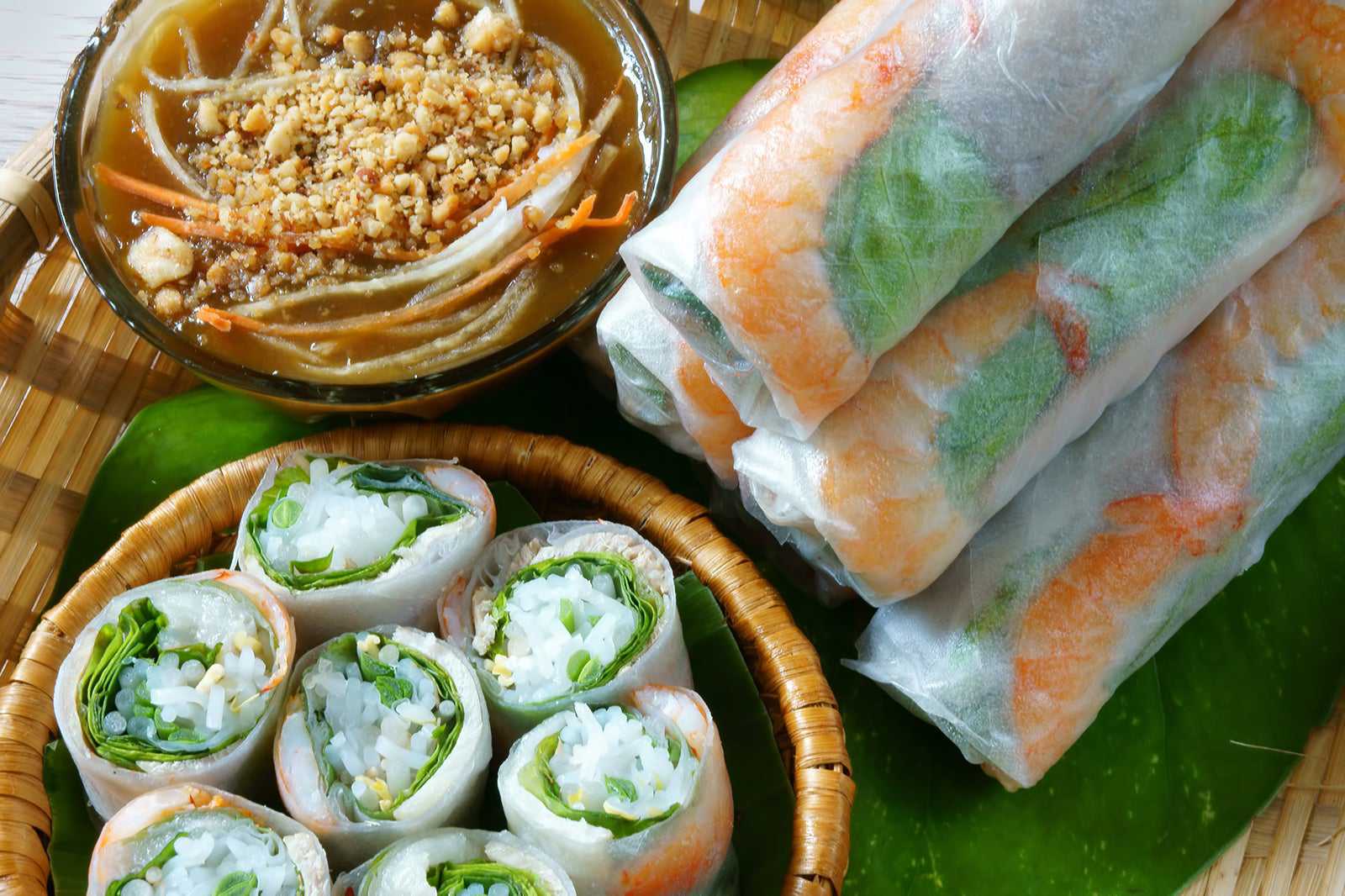
- Food
Goi cuon (Vietnamese fresh spring rolls) consist of thin vermicelli noodles, pork slices, shrimp, basil, and lettuce, all tightly wrapped in translucent banh trang (rice papers). Due to its subtle flavor, goi cuon is usually dipped into ground chilies and a hoisin-based dipping sauce topped with crushed peanuts.
This popular snack or appetiser is also a healthier alternate to cha gio, which is a deep-fried egg roll made with a combination of mung bean noodles, minced pork, and various spices.
- 5
Mi quang (Vietnamese turmeric noodles)
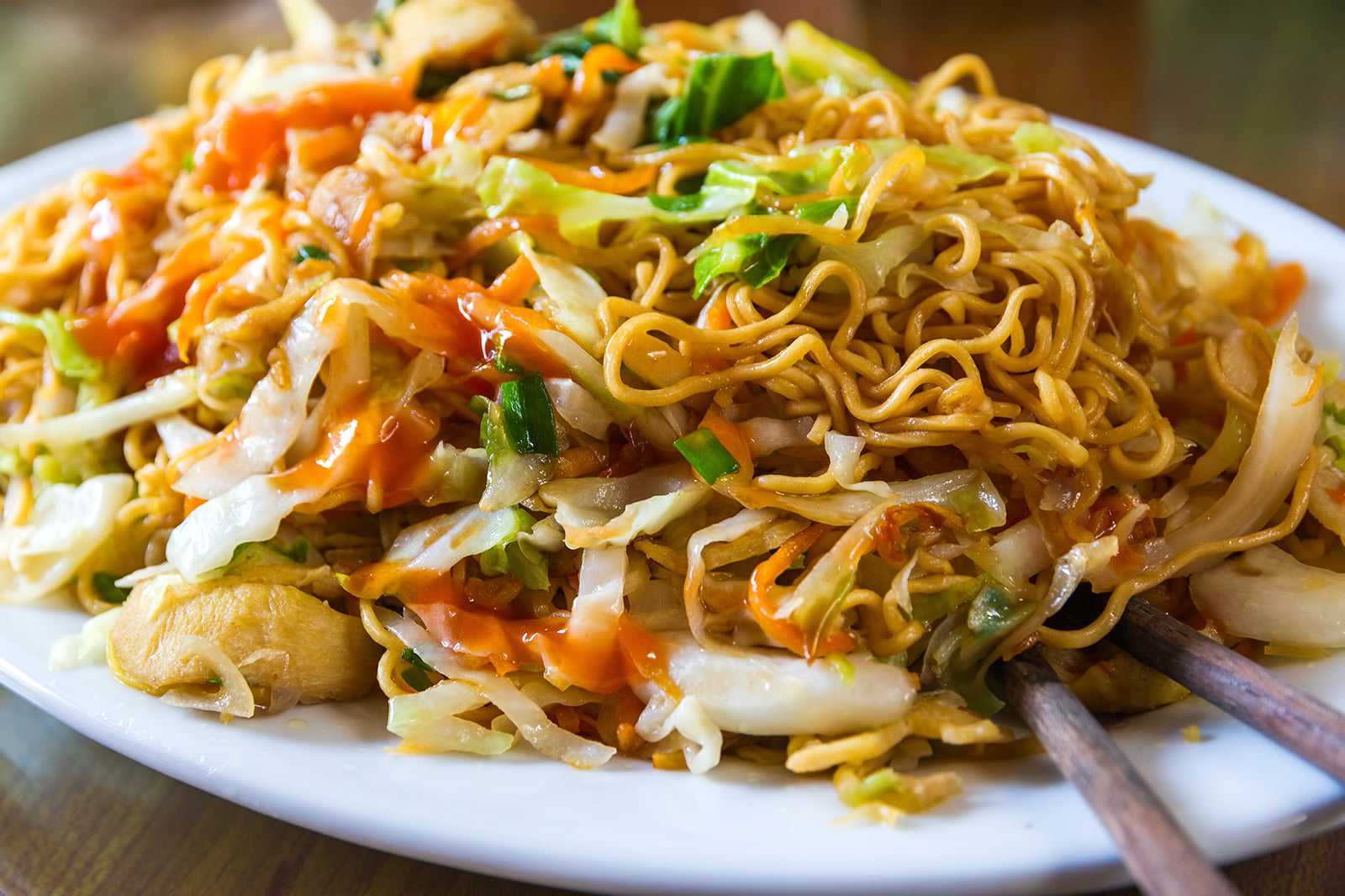
- Food
Mi quang may be available at most restaurants in Vietnam, but it actually originates from Da Nang. Easily distinguished by its yellow-coloured rice noodles, this dish is a hearty mix of bone broth seasoned with fish sauce, black pepper, shallot, and garlic, as well as meaty ingredients such as river shrimp, boiled quails eggs, and roast pork.
As with most Vietnamese dishes, mi quang also comes with a variety of herbs, including basil, peanuts, cilantro, lettuce, sliced banana flowers, and sesame rice crackers.
- 6
Bun thit nuong (vermicelli noodles with broiled pork)
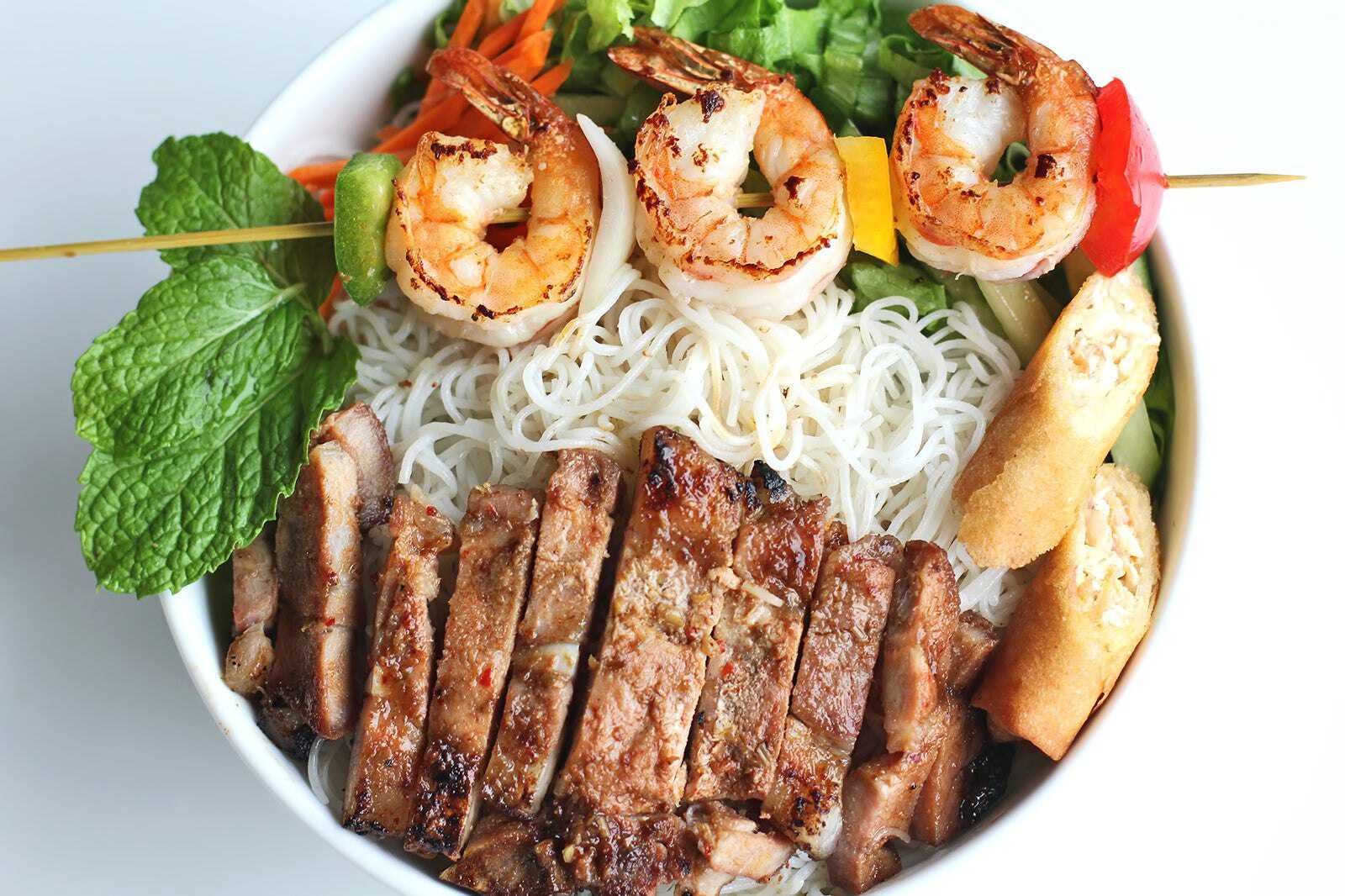
- Food
Bun thit nuong comprises thin vermicelli rice noodles, chopped lettuce, sliced cucumber, bean sprouts, pickled daikon, basil, chopped peanuts, and mint, topped with broiled pork shoulder. Unlike most noodle dishes, it doesn’t come in a soup or broth, but with a side of nuoc cham sauce for diners to mix into for a flavorful ensemble.
While bun thit nuong is quite filling on its own, you can also try another variation called bun thit nuong cha gio, which is topped with sliced cha gio (deep-fried Vietnamese spring rolls).
- 7
Com tam (broken rice)
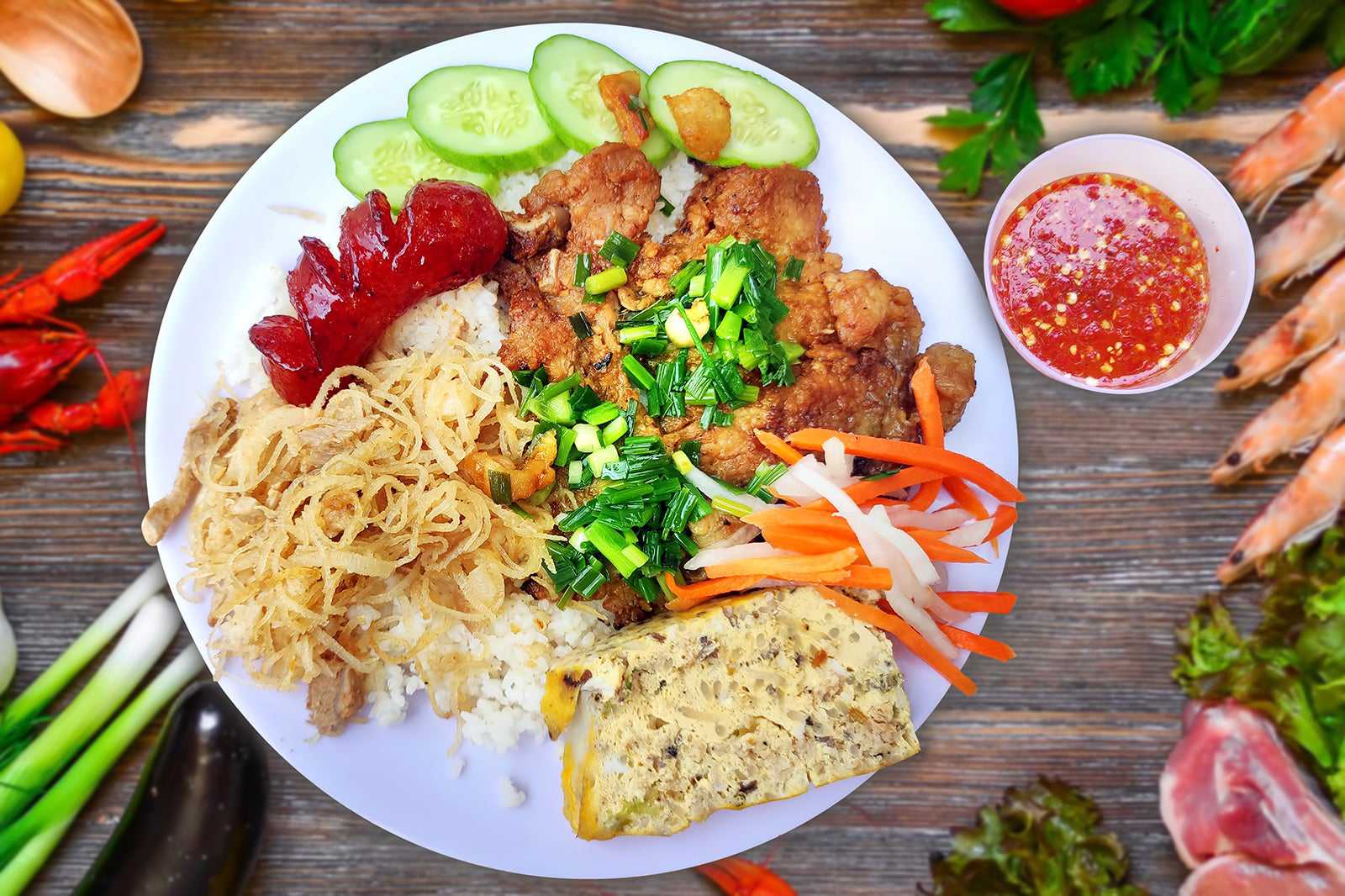
- Food
Com tam literally translates to ‘broken rice’ in Vietnamese. It's traditionally served with a fried egg, diced green onions, and a variety of meats. While it’s a popular choice for breakfast or lunch, it can be enjoyed any time of the day as it is relatively inexpensive.
Toppings options include suon nuong (barbecued pork chop), bi (shredded pork skin), and cha trung (steamed pork and egg patty). Com tam also comes with a side of pickled vegetables, cucumber slices, and nuoc cham (Vietnamese dipping sauce).
- 8
Banh cuon (rolled cake)
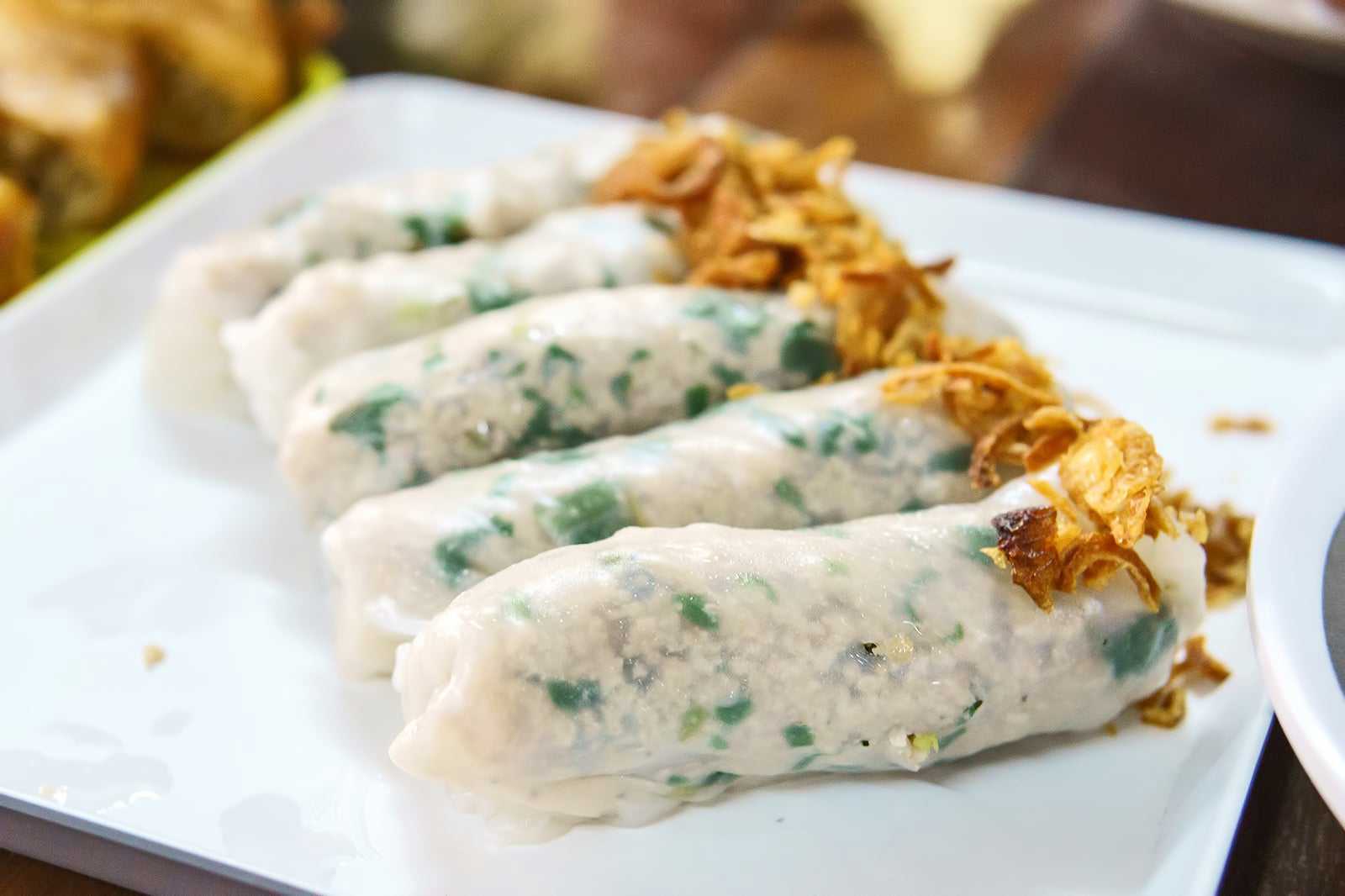
- Food
Also known as rolled cake, banh cuon is great for when you’re feeling peckish whilst sightseeing in Vietnam. It's a combination of ground meat (chicken, shrimp, or pork), minced wood ear mushroom, onions, Vietnamese ham (cha lua), steamed beansprouts, and cucumbers wrapped in a steamed rice flour sheet.
It has a surprisingly mild taste, despite the many savory ingredients. For added flavor, you can dip the banh cuon into nuoc cham sauce. Due to its popularity among travelers, you can easily spot plenty of roadside vendors selling banh cuon close to tourist sights and nightlife districts.
- 9
Xoi xeo (sweet sticky rice)
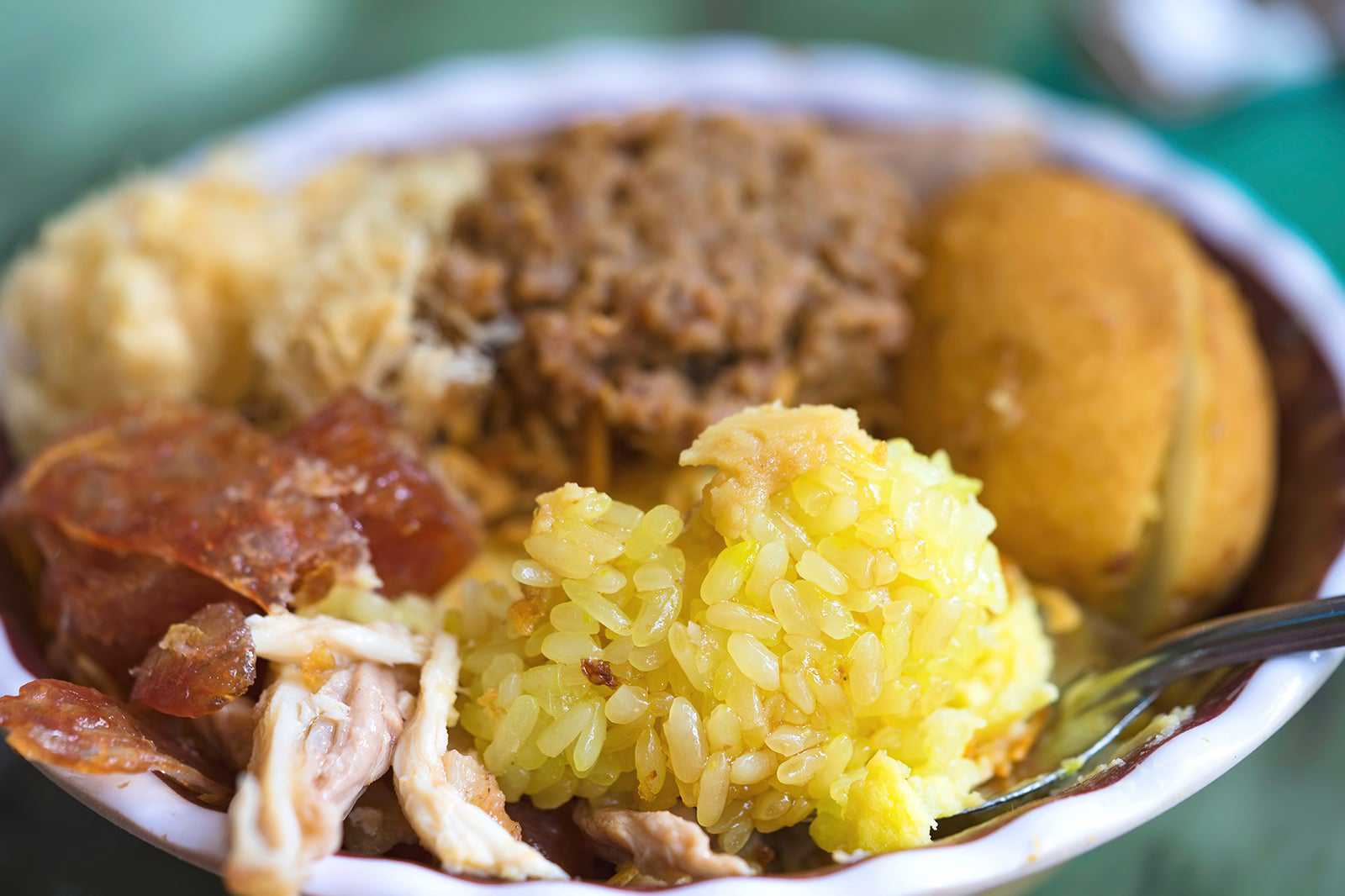
- Food
Xoi xeo is a sweet-savoury Vietnamese snack that’s typically topped with green mung bean paste, soy sauce, and dried shallots. For a more substantial meal, many restaurants now offer a variety of ingredients such as pate, boiled chicken, cha lua (Vietnamese ham), marinated pork belly, or preserved eggs.
Xoi xeo can also be enjoyed for dessert, which consists of dried coconut shavings, roasted sesame seeds, and crystallised sugar.
- 10
Ca kho to (caramelized fish in clay pot)
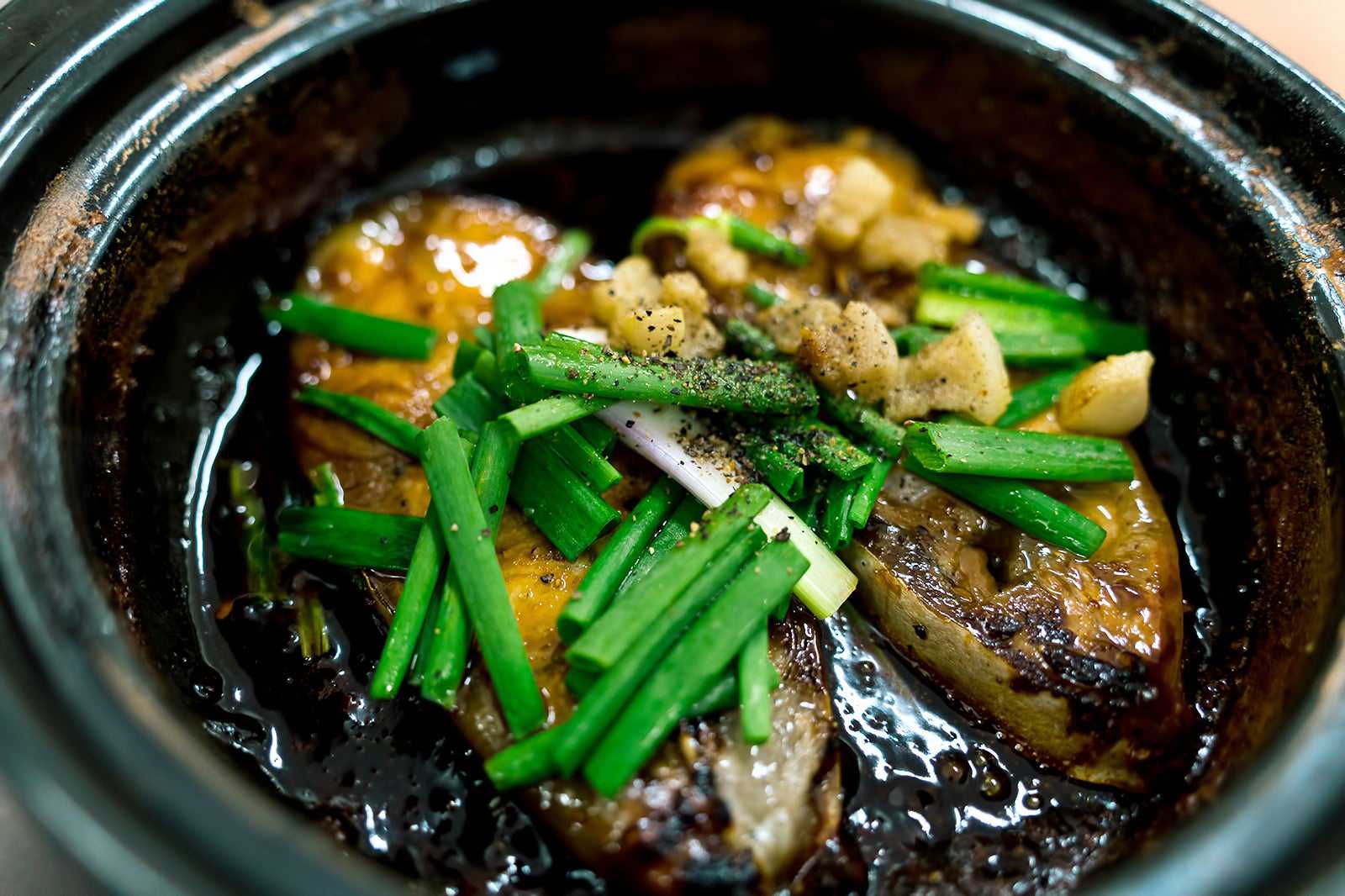
- Food
Ca kho to is a must-try if you’re a fan of fish, consisting of a catfish fillet that’s braised and served in a clay pot. Mostly available in cities in southern Vietnam, particularly Ho Chi Minh, this dish is prepared by slicing a whole catfish into fillets before caramelizing it in a thick gravy made with a combination of soy sauce, fish sauce, sugar, shallots, garlic, and various spices and seasonings.
Ca kho to is known for its intense sweet-salty flavor, so this dish is always served with a plate of white rice and fresh greens.
